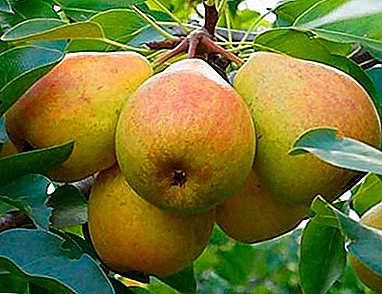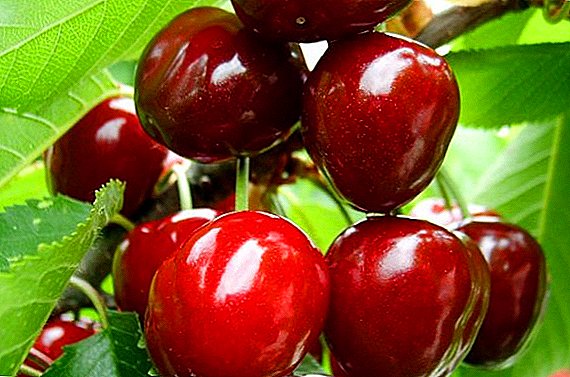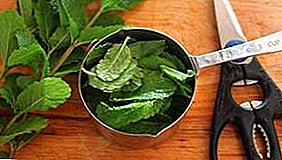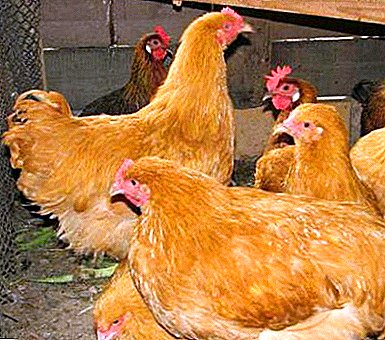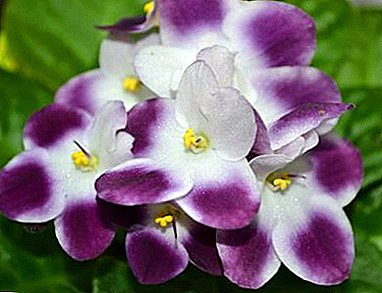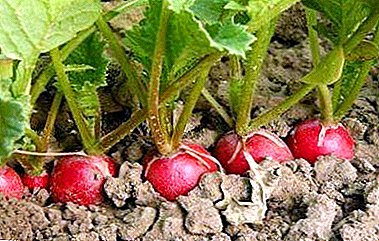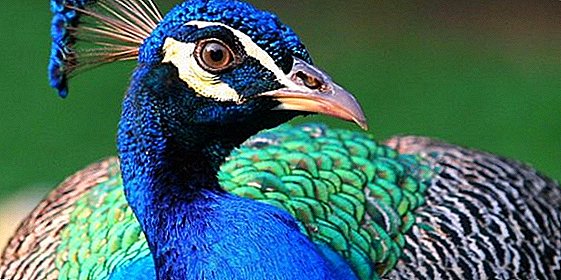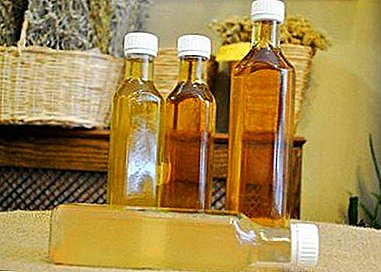 Eggplant dishes are loved by many, and gardeners respect this crop for a variety of ripening periods, high yields, resistance to pests and ease of care. Eggplant "Diamond" enjoys special respect, the characteristics and description of the variety of which will be presented later.
Eggplant dishes are loved by many, and gardeners respect this crop for a variety of ripening periods, high yields, resistance to pests and ease of care. Eggplant "Diamond" enjoys special respect, the characteristics and description of the variety of which will be presented later.
Variety description
This eggplant is time-tested and is a success among gardeners. It is absolutely universal in cultivation: in warm climates it is cultivated on unprotected soil, and in cooler areas this variety can be planted in greenhouses and greenhouses. It is present in the State Register since 1983 and is suitable for mechanized harvesting.  The bush grows short in height, up to 60 cm. Fruits densely form on the lower part of the plant, about 30 cm from the ground. On the sepal of this vegetable there are no thorns, which eliminates the risk of hurting hands during the harvest of fruits. It is quite resistant to drought and other adverse conditions.
The bush grows short in height, up to 60 cm. Fruits densely form on the lower part of the plant, about 30 cm from the ground. On the sepal of this vegetable there are no thorns, which eliminates the risk of hurting hands during the harvest of fruits. It is quite resistant to drought and other adverse conditions.
Did you know? If the eggplant seeds planted in the ground are covered with snow, the plant will be more resistant to diseases and adverse weather conditions. This method can only be used with seedless mode.
The main advantage of eggplant "Diamond" - excellent yield. On average, with 1 square. m collect 2-8 kg of fruit. Vegetables can be harvested 110-130 days after planting.  Eggplants grow up to 14-18 cm in length and 5-6 cm in diameter, the fruits have a cylindrical shape. The standard weight of a ripe vegetable is 130-140 g.
Eggplants grow up to 14-18 cm in length and 5-6 cm in diameter, the fruits have a cylindrical shape. The standard weight of a ripe vegetable is 130-140 g.
The ripeness of the fruit is determined by the color - it must be dark purple. Ripe pulp - greenish, dense structure, not bitter.
Learn more about growing other varieties of eggplants: Prado, Clorinda F1, Valentina F1.
Growing up
You can grow eggplant "Diamond" using seedlings and seedlessly. The most productive - rassadny.
Seed preparation
A good result from the cultivation of eggplant "Diamond" is obtained if the seeds are pre-prepared. This will help improve the immunity of seedlings and increase their germination.
Seeds are sorted and sorted by size. Such calibration is needed in order to determine the distance at which seedlings are planted.  Can be processed before planting seed. Proven way: 3 ml of hydrogen peroxide is diluted in 100 ml of water and heated to 40 ° C. In this solution for 10 minutes, put the seeds immediately before planting.
Can be processed before planting seed. Proven way: 3 ml of hydrogen peroxide is diluted in 100 ml of water and heated to 40 ° C. In this solution for 10 minutes, put the seeds immediately before planting.
Planting seeds
In order for the seedlings to grow strong, the seeds are sown 40-60 days before planting in the ground, i.e., it is necessary to grow eggplants already from the end of winter.
Eggplants love a light, nutritious soil with mandatory fertilizing with organic fertilizers. The ideal soil is black soil, loam, sandy loam. 
Important! Do not plant eggplants in saturated mineral salts and clay soil.
For planting seeds you need to take black soil (you can just from the garden), sand and peat. All these components must be in equal quantities. You can supplement the soil with phosphorus, ammonium or potash fertilizers, and vermiculite is added for looseness and better aeration of the soil.
Plant seed in one container or individual cups. If the seeds are planted in one container, then they need to dive.  The soil is moistened before planting. If planting goes in separate containers, 2-3 seeds are placed there, then to leave the strongest seedling. Depth of landing is 0.5-1 cm. If a common container is used, the seeds are deepened by 1 cm and a distance of 5 cm is observed.
The soil is moistened before planting. If planting goes in separate containers, 2-3 seeds are placed there, then to leave the strongest seedling. Depth of landing is 0.5-1 cm. If a common container is used, the seeds are deepened by 1 cm and a distance of 5 cm is observed.
Check out the best varieties of eggplants for the Moscow region and Siberia.
After the seed is placed in the ground, it is plentifully watered, covered with film or glass and set aside in a warm (+ 23-25 ° C) room. Shoots will appear in 7-10 days.
When the seedlings began to appear en masse, the shelter is removed, and the containers are exposed to light and provide them with a temperature of + 15-18 ° C. Adequate lighting contributes to the normal development of the roots of seedlings. It is desirable that the light was present for at least 12 hours a day.
Did you know? In Russia, eggplants were called "blue" and "demiankoy." In the 17-18 centuries. they were added to meat soup.
Care
The seedling requires a certain care, because on how you follow the seedlings, depends on the yield and plant resistance in the beds.
Watering
Water the seedlings moderately (about every 3 days), settled with water at room temperature. 
Important! It is impossible to allow an excess of moisture, the seedlings from this may die.
Top dressing
2 weeks after planting the seeds, the first fertilizer of the seedlings can be carried out. To do this, urea is diluted with water (15-20 g of urea per 1 liter of water) and watered with a solution of the soil.
In the future, the plant is fed 3 times a month. For young seedlings it is good to apply irrigation with liquid fertilizers. At the same time the soil should be slightly wet.
Transfer
It is possible to plant seedlings at a permanent place after spring frosts are bypassed. In the middle lane is the end of May - the beginning of June. It should be noted that the seedlings should be at least 5-6 of these leaves, and the rhizome should be well formed.  Before transplanting seedlings are well watered. Seedlings are planted with two-line ribbons in the prepared soil. The distance between the rows and lines should be 70 cm, and between the plants themselves -35-40 cm.
Before transplanting seedlings are well watered. Seedlings are planted with two-line ribbons in the prepared soil. The distance between the rows and lines should be 70 cm, and between the plants themselves -35-40 cm.
The prepared wells are watered and a diluted mullein is added to them. Then seedlings are placed there and powdered with dry soil.
Important! If planting is carried out in a protected ground, seedlings should be more mature.
The principle of planting seedlings in a greenhouse is about the same, but it should be borne in mind that plants need a certain temperature for growth, which depends on the weather:
- clear - + 28 ° C;
- rainy - + 24 ° C;
- night - + 20-22 ° C.
Diseases and pests
Eggplant "Diamond" has good immunity to stolbur and tobacco mosaic virus.  Not bad, he suffers and some fungal diseases:
Not bad, he suffers and some fungal diseases:
- Fusarium;
- late blight;
- verticillary wilting;
- peak rot.
Did you know? The usual radish growing next to the weeds will help fight weeds.
You can fight the Colorado potato beetle in several ways:
- Collect by hand from the bushes.
- Spray the plants with special means (for example, chlorofos).
- Disinfect the roots of seedlings before the landing of the "Prestige".
- Planted eggplants in places where there are no Colorado potato beetles (in the lighted areas of the garden).
 Here it is - eggplant "Diamond", the process of cultivation of which is not only not difficult, but also to some extent fascinating. Moreover, among all the variety of varieties, it stands out quite favorably for its taste and yield.
Here it is - eggplant "Diamond", the process of cultivation of which is not only not difficult, but also to some extent fascinating. Moreover, among all the variety of varieties, it stands out quite favorably for its taste and yield.

